How to Keep a Wood Stove Burning All Night 2024
- September 28, 2023
- 7 comment
Nothing beats the cozy ambiance and warmth of a wood stove during the chilliest nights. Being able to keep the stove burning throughout the night means you wake up to a toasty room, which is especially comforting during the winter months. But maintaining a steady, slow burn for hours on end requires a bit of know-how.
1. Choose the Right Wood
Selecting the appropriate type of wood is fundamental when your goal is a long-lasting burn.
Hardwood
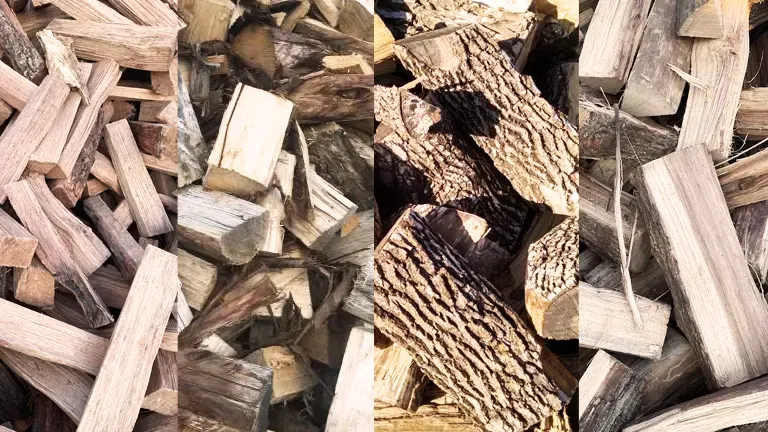
Derived from deciduous trees, hardwoods are optimal for prolonged burning sessions. Some common examples are oak, maple, ash, and hickory. The advantage of hardwoods lies in their higher energy content per cord, meaning they can burn longer and produce consistent heat over extended periods.
Seasoned Wood
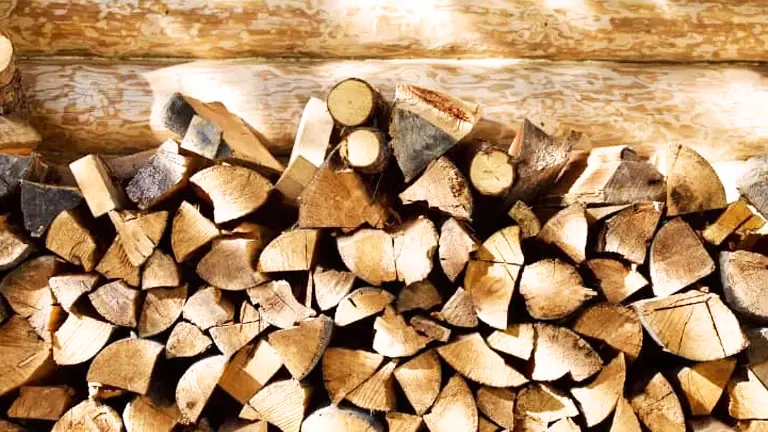
It’s crucial that the wood you choose has been adequately seasoned. This means it should have been split, kept in storage, and allowed to dry for a duration ranging from 6 to 12 months. When wood is sufficiently dried, its moisture content drops below 20%, which is ideal. Wood with this level of dryness burns more efficiently, ensuring you get the most out of every log you place in your stove.
2. Prepare Your Stove
Clean the Stove

It’s essential to adopt a routine of frequently clearing ashes from the firebox to keep the stove in optimal condition. While a slight amount of ash at the bottom can provide a beneficial insulating layer, supporting the fire’s consistency, it’s vital to monitor and ensure it doesn’t accumulate excessively.
Ensure Proper Airflow

When you’re getting your fire started, it’s of utmost importance to open the stove’s air intake vent or damper to its maximum. This action facilitates the highest possible airflow, aiding in creating an efficient and healthy fire.
3. Building the Fire
Start Small
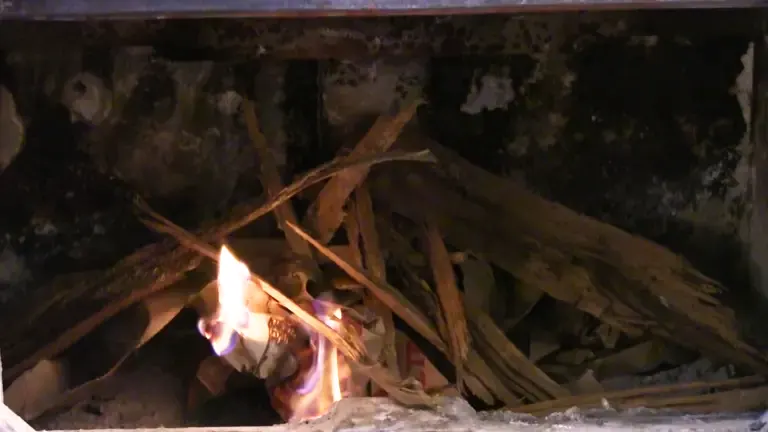
To begin building a fire, it’s essential to start with the basics. Lay down crumpled newspaper or use fire starters at the base of your stove, as these materials are designed to ignite easily. On top of this, place kindling in a crisscross pattern. This specific arrangement promotes better airflow, which is crucial for initiating a strong and consistent burn. Establishing this base ensures that the fire starts hot and strong, creating an optimal environment for larger logs.
Add Larger Logs
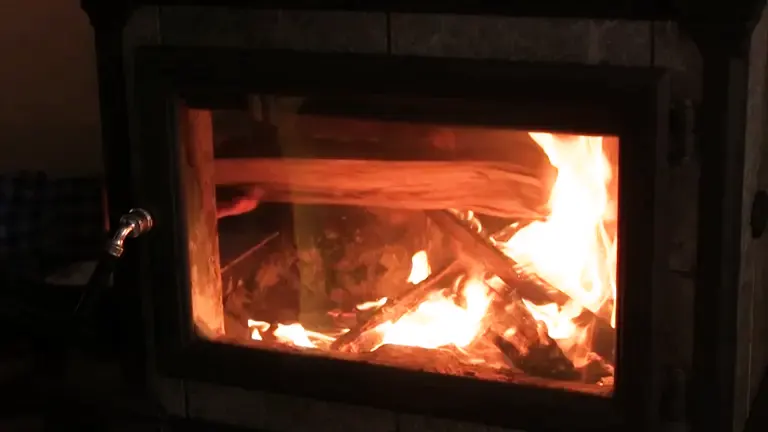
Once the kindling is actively burning and a steady flame is established, it’s time to add the larger logs. These logs are meant to provide the long-lasting burn necessary for extended warmth. However, to ensure a consistent and controlled fire, add them progressively. After placing a set of logs, give them time to catch fire before introducing more. This step-by-step method ensures that the fire remains stable and efficient throughout its duration.
4. Reduce Airflow
Once you’ve successfully established a robust fire that’s burning with intensity:
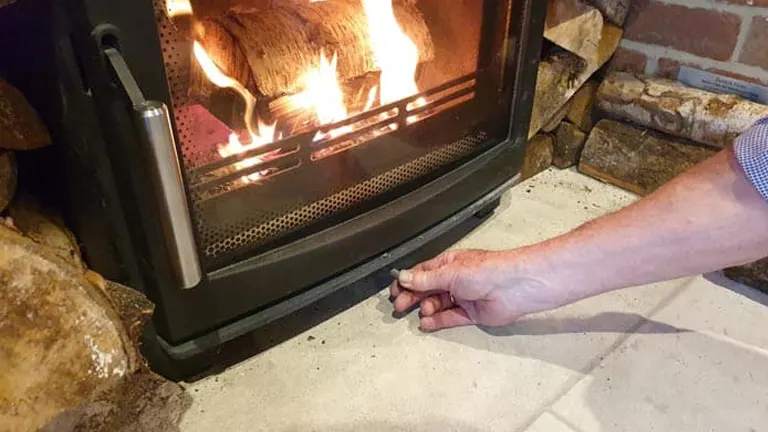
Begin by cautiously dialing back the air intake. It’s vital not to shut it completely or make rapid adjustments, as this could jeopardize the fire’s stability. By moderating the oxygen supply, you allow the wood to burn at a more measured pace, ensuring it provides warmth over an extended period.
5. Log Placement for Extended Burn
Log Cabin Method
For those looking to achieve prolonged burning, the Log Cabin method serves as an efficient technique. By positioning the logs in either a square or rectangular layout, a central space is created which can be packed with smaller wood pieces and kindling. This particular arrangement not only ensures optimal airflow but also promotes a more extended burn.
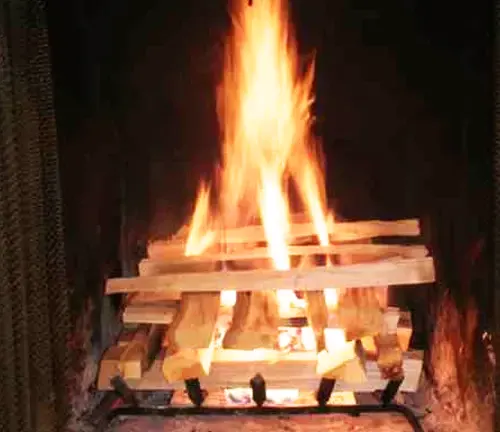
Upside Down (Top-Down) Method
Another effective method for sustained burning is the Upside Down or Top-Down approach. Begin by placing the most substantial logs at the stove’s base. As you build upwards, use progressively smaller logs, followed by kindling, and finally, place newspaper at the very top. One of the distinct advantages of this method is that it tends to produce lesser amounts of creosote. Additionally, it’s designed to burn efficiently for an extended duration.
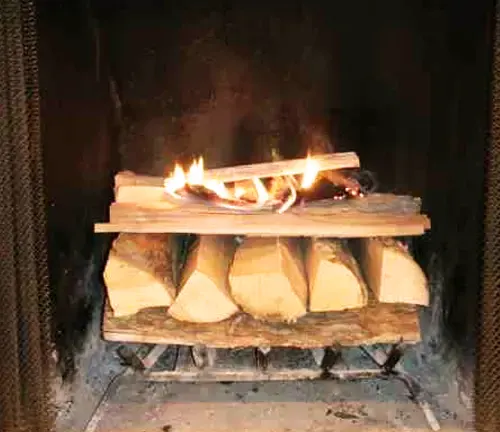
6. Monitor and Maintain
Check Periodically
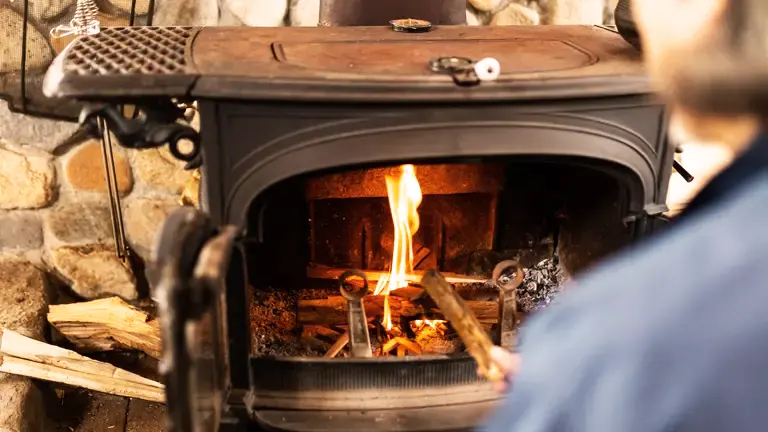
Although the goal is to have the stove burn throughout the night, it’s essential to periodically inspect the fire. Regular checks ensure that the fire continues to burn safely. If you notice the fire dwindling or if it requires reinforcement, add logs accordingly.
Keep the Damper Slightly Open
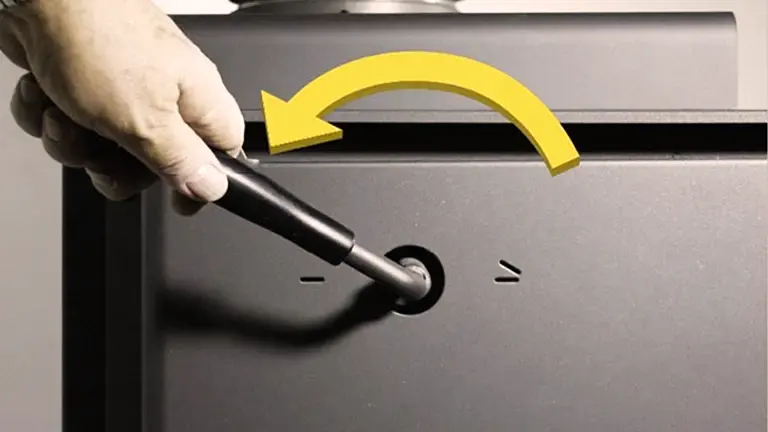
To maintain both safety and efficiency in your stove, always keep the damper slightly ajar. This slight opening aids in preventing an excessive accumulation of creosote, which can pose risks if left unchecked.
7. Safety Tips
Install Smoke and Carbon Monoxide Detectors

Any residence using a wood-burning stove should prioritize installing both smoke and carbon monoxide detectors. Their role is crucial in early detection, alerting occupants to potential hazards, and ensuring timely interventions.
Don’t Overfill
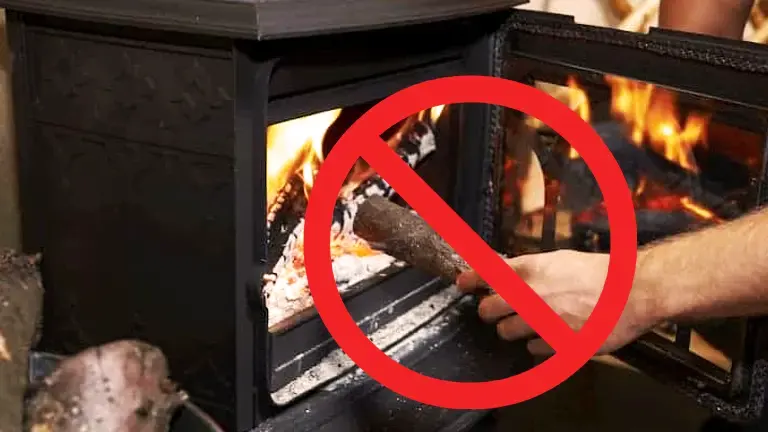
It’s natural to want to maximize the wood load in your stove, especially when seeking a lasting burn. However, one should resist the urge to overstuff it. Overfilling can lead to an excessively hot stove and, more concerningly, there’s the risk of logs tumbling out upon opening the door, posing potential hazards.
Regular Maintenance
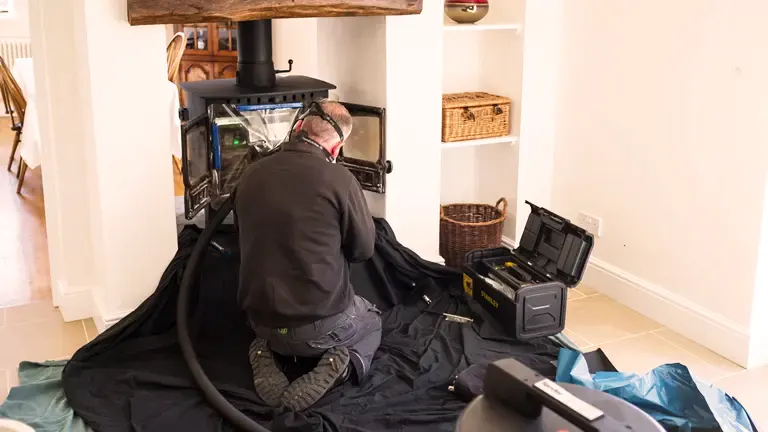
Consistent upkeep is vital for the safe operation of wood-burning stoves. Annually, it’s advisable to engage a professional to inspect and clean both the stove and chimney. This ensures smooth functioning and helps identify and rectify any emerging issues.
Conclusion
Keeping a wood stove burning all night is a mix of art and science. With the right wood, proper preparation, and careful monitoring, you can enjoy the warmth and comfort a wood stove offers for hours on end. Always prioritize safety and enjoy those cozy winter nights to the fullest!
Related Articles:
- How to Remove Rust and Restore a Wood Stove 2023
- How to Install a Wood Stove in the Basement 2023
- How to Choose the Best Wood Burning Stove Insert 2023
- How to Cool Down a Wood Stove Quickly 2023
- How to Replace Wood Stove Fire Brick 2023
- How to Replace the Gasket on a Wood Stove 2023
- How to Remove Creosote from a Wood Stove 2023
- How to Choose the Right Wood Cooking Stoves for Your Needs
FAQs
- Why do hardwoods burn longer than softwoods in a wood stove?
Hardwoods, derived from deciduous trees, have a denser cellular structure than softwoods. This density results in a slower, steadier burn, making them ideal for an all-night fire. - Can I use artificial firelogs in my wood stove for an all-night burn?
While artificial firelogs are designed for convenience, they may not be suitable for all wood stoves and might not provide the same duration of burn as natural hardwoods. Always check the manufacturer’s recommendations before using them. - How does the upside-down method produce less creosote?
The upside-down (or top-down) method burns hotter and more efficiently from the start. This efficient combustion results in fewer unburned particles, which in turn reduces creosote formation. - What’s the role of ash in extending the burn time?
A thin layer of ash can act as an insulator, helping to retain the heat and maintain a consistent burn temperature. However, too much ash can restrict airflow and suffocate the fire. - Can I use green or fresh wood to keep the stove burning all night?
Green or unseasoned wood has a high moisture content. Burning it can result in a smoky fire, produce more creosote, and is less efficient than using seasoned wood. It’s best to use wood that’s been dried for at least 6-12 months for a consistent all-night burn. - Why is airflow crucial when starting the fire but reduced later for a longer burn?
Maximum airflow at the start helps in establishing a robust fire quickly. Once the fire is established and burning hot, reducing the airflow will slow down the combustion, making the wood burn slower and last longer. - How can I ensure my wood-burning stove is safe for an all-night burn?
Regular maintenance, not overfilling the stove, and using seasoned hardwoods are key. Also, installing smoke and carbon monoxide detectors provides an additional layer of safety. - Why do some people use a moisture meter with their firewood?
A moisture meter helps in determining the moisture content of the wood. For efficient burning, wood should ideally have a moisture content of below 20%. This ensures it burns hotter, produces less smoke, and lasts longer. - Is there an optimal log size for an all-night burn?
While the exact size can vary based on the stove and individual preference, logs that are split and range between 3 to 6 inches in diameter generally provide a good balance of surface area for combustion and mass for burn duration. - Can I mix hardwoods and softwoods for an all-night burn?
Yes, many stove users mix the two. Starting with softwoods can help establish a fire quickly due to their faster ignition rate. Once a strong fire is established, adding hardwoods can extend the burn time.
In conclusion, mastering the art of keeping a wood stove burning all night is a blend of knowledge, preparation, and practice. By choosing the right wood, properly preparing your stove, and maintaining a watchful eye, you can ensure a cozy, warm atmosphere throughout the night. We hope this guide has provided you with valuable insights and practical tips. Remember, every wood stove and home environment is unique, so don’t be discouraged if your first few attempts don’t result in a perfect all-night burn. With time, you’ll find the right rhythm that works best for you. We’d love to hear about your experiences, tips, or challenges you’ve faced. So please, share your thoughts in the comments below, and let’s keep the conversation burning bright!

David Murray
Forestry AuthorI'm David Murry, a forestry equipment specialist with a focus on chainsaw operation. With over 13 years of experience, I've honed my skills in operating and maintaining a wide range of machinery, from chainsaws to log splitters. My passion for the outdoors and commitment to sustainable forestry drive my work, which emphasizes safety, efficiency, and staying updated with industry advancements. Additionally, I'm dedicated to sharing my expertise and promoting environmental awareness within the forestry community.
7 comments
Excellent advise
John thrower
October 1, 2023 7:19 pmExcellent advise
John thrower
October 1, 2023 7:17 pmExcellent advise
John
October 1, 2023 7:15 pmI also believe that the upside down method helps to warm up the chimney and firebox. This gives a better draw and helps to prevent creosote buildup in the chimney. Thanks for a good article.
Jerry Spangler
September 30, 2023 5:01 pmPlease don't leave it burning all night. You will pollute yourself and your neighbours even more. All woodsmoke is toxic. It has a high particulate matter content - the most harmful air pollutant to human health.
Hazel
September 30, 2023 3:06 pmHazel Could you explain further



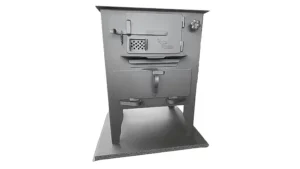






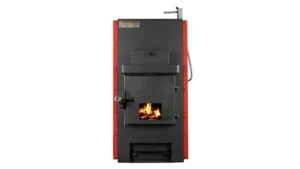
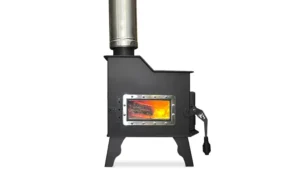

The building regs call for a heat sensor rather than a smoke detector plus CO monitor.
Kevin Poole
October 2, 2023 4:56 pm